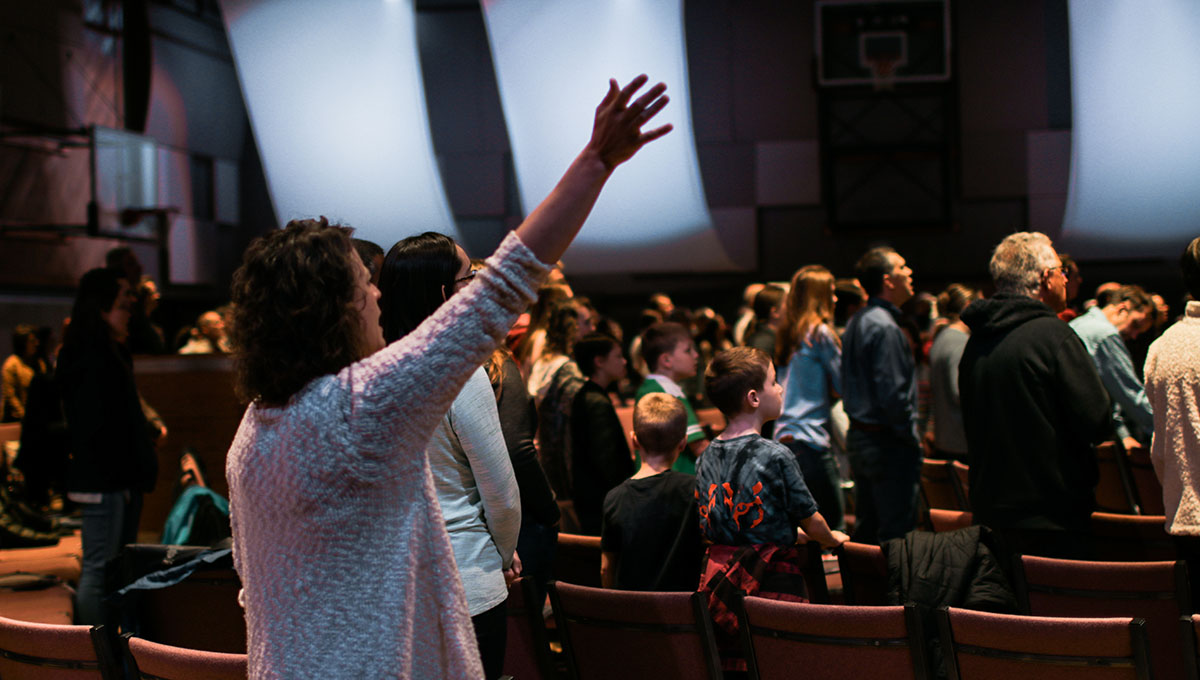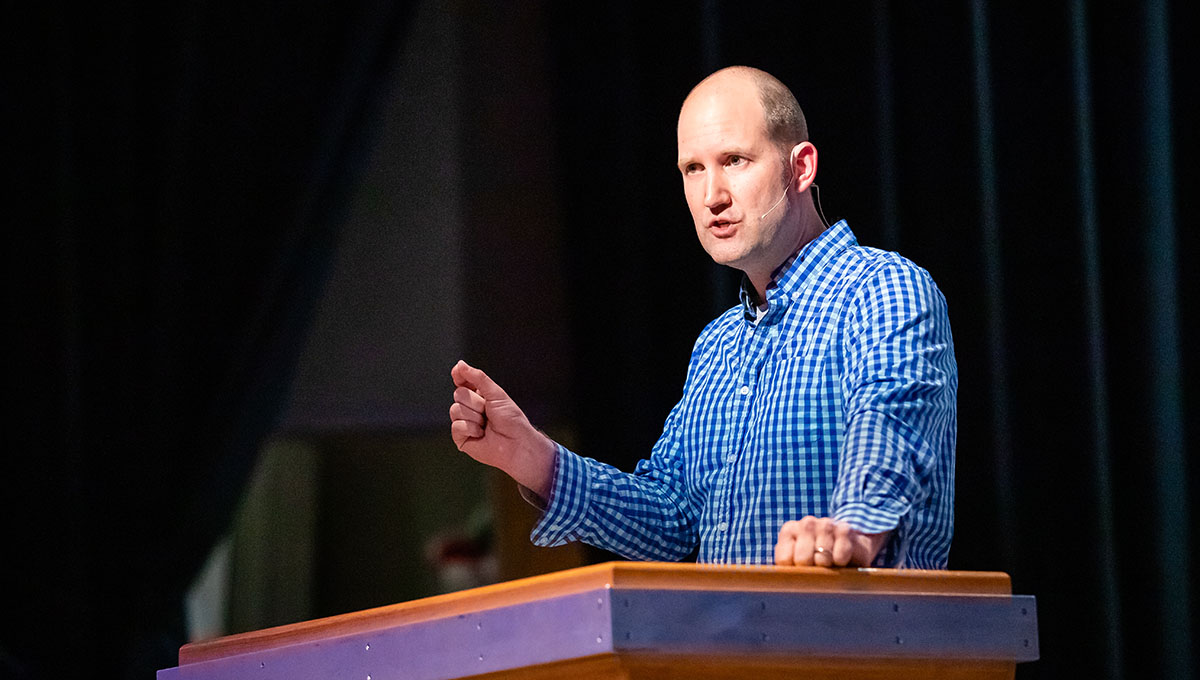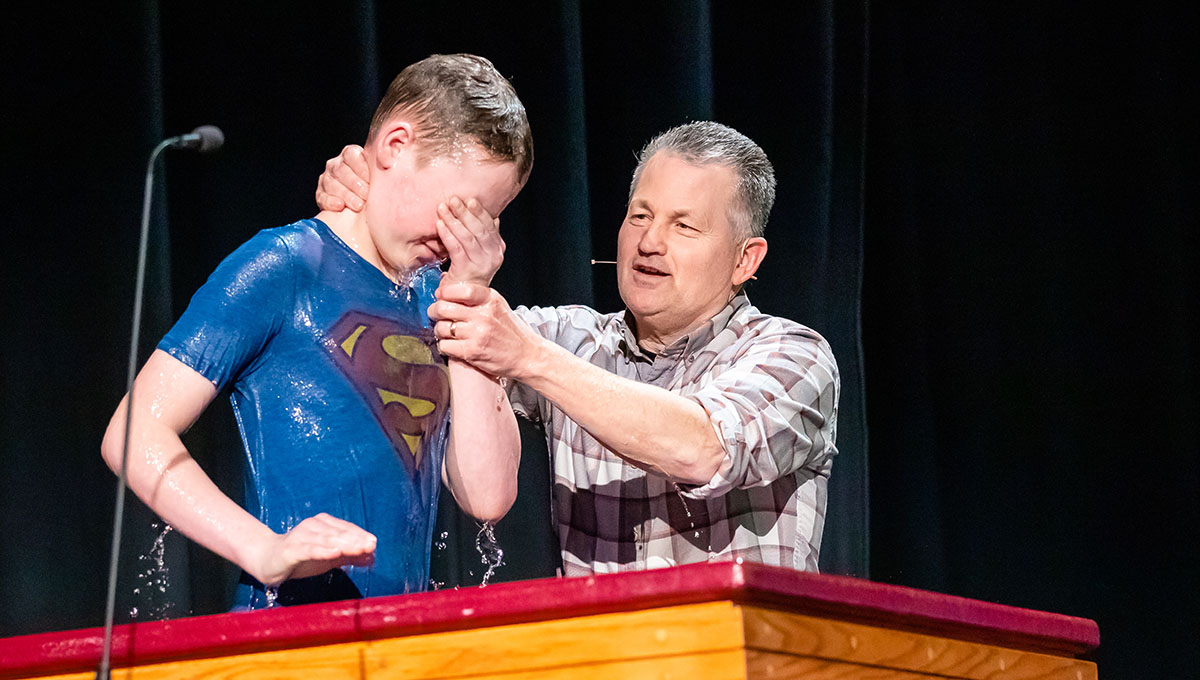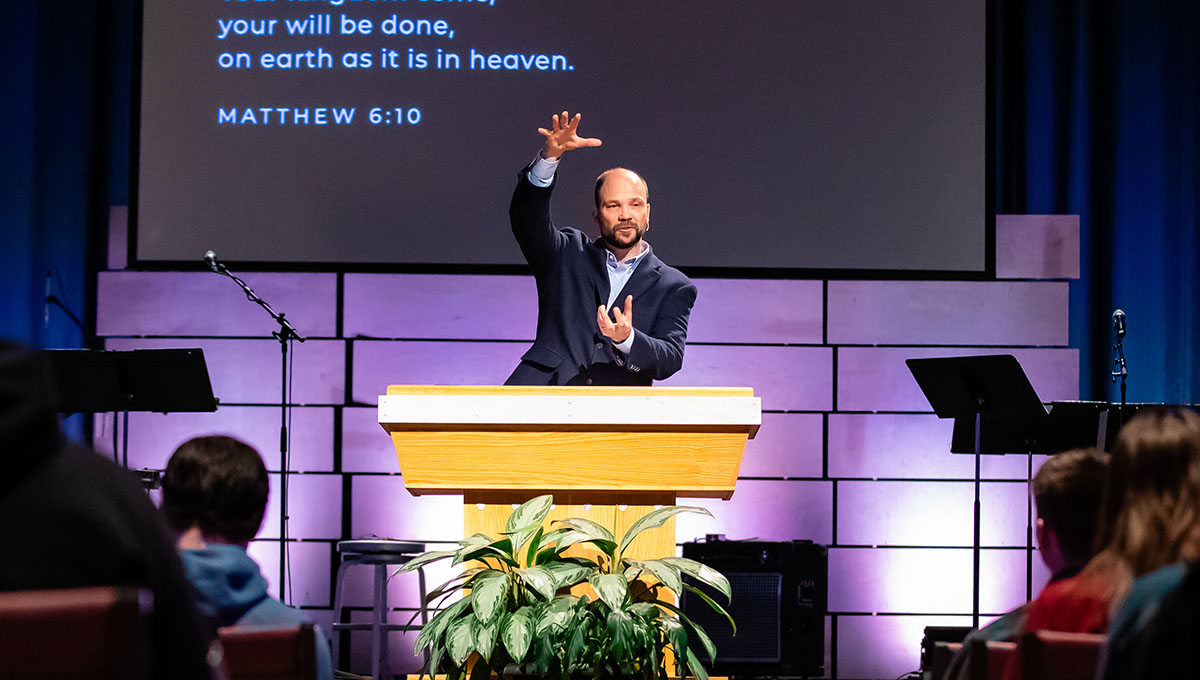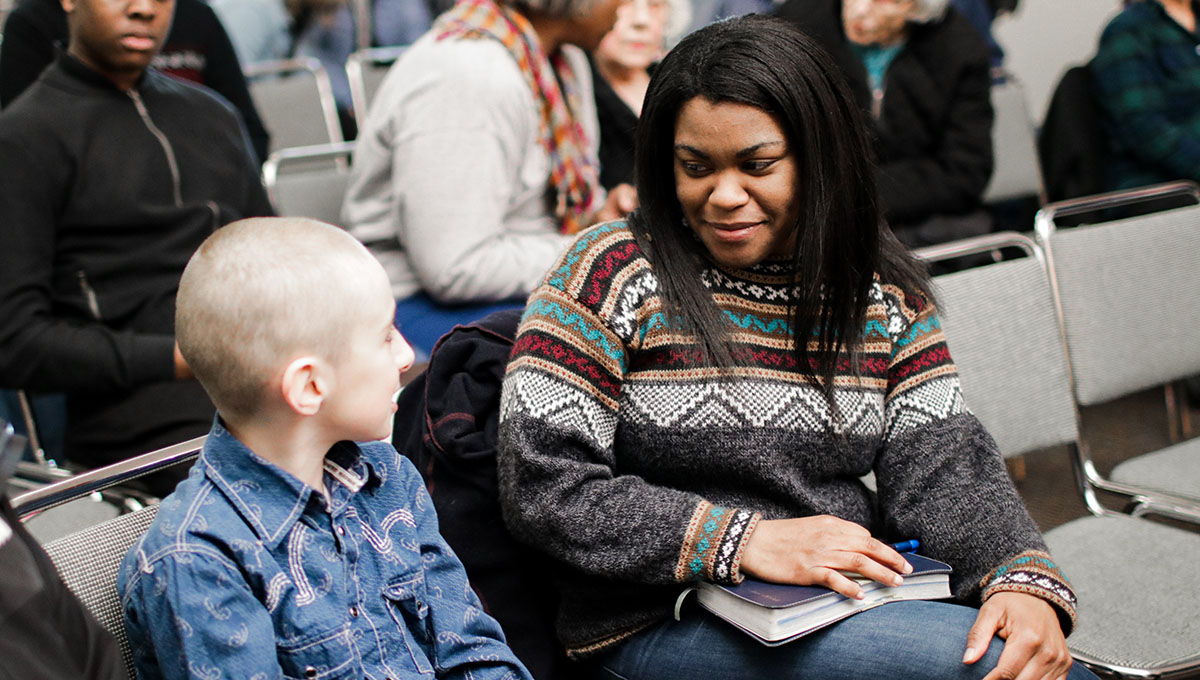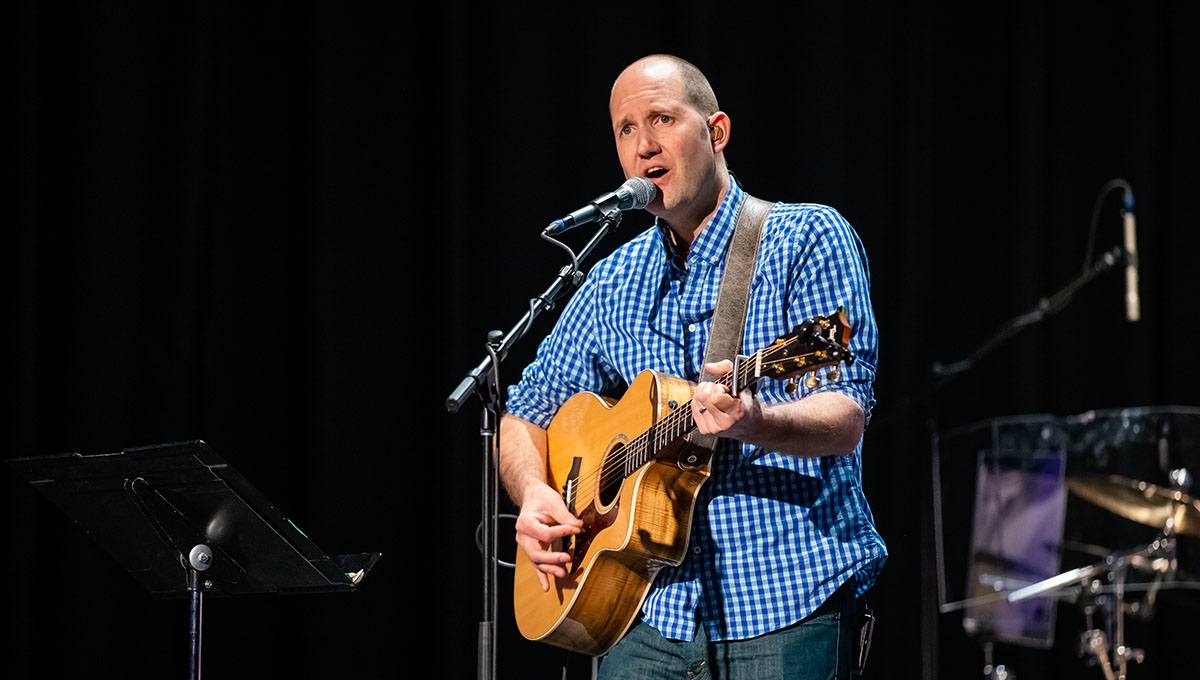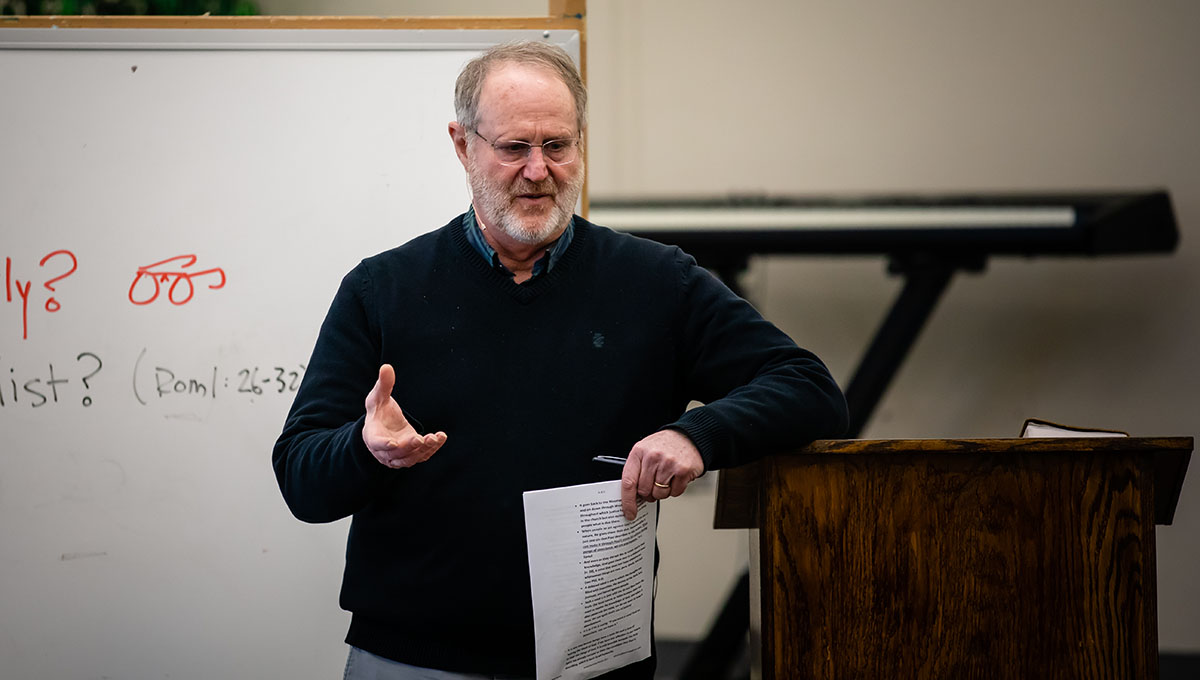A Path through the Forest
- Nathan Schneider

Life can be a fickle thing. There are ups and there are downs. There are moments of surpassing joy, happiness, and contentment. There are also moments of doubt, discouragement, and pain. I think if we all were honest, we’d admit that in our heart of hearts, each of us hope that the ups outnumber the downs, that as we survey life in our twilight days, we would look back with fondness more than heartbreak.
Some of us get to do that, and some of us don’t. Life doesn’t guarantee equal outcome, no matter who’s in charge of the federal government. In fact, the only thing the government can do is guarantee that everyone suffers equally. Just look at Soviet Russia if you want a recent historical example.
In reality, the ups and downs are all part of the mixture of sin and grace. We experience the hardships, the tragedies, the discouragements, the failures, because we live in a broken, hurting world. The people around you are sinners. And you’re one also, and everyone contributes to the problem in a complicated network of sin, selfishness, and pride. You add to that the created order around us, which the apostle Paul describes as “groaning together in the pains of childbirth” (Rom 8:22), anticipating, as it were, the time for when creation itself “will be set free from its bondage to corruption and obtain the freedom of the glory of the children of God” (Rom 8:21). In other words, there is nothing in this created universe that has not been touched by the ravaging effects of the fall of man, and our “downs” in life are part of the expected outworking of that fact.
At the same time, there’s no denying that not all of life is lived in the dark. For some, the darkness lasts longer and cuts deeper, but there are shimmers of light for all and full-on bright and sunny days for most. How do we explain these in a fallen, broken world? That’s easy: it’s because of God’s grace. Though man deserves nothing but condemnation, each of us, regardless of our relationship with God, enjoys the benefits of a gracious, patient, and benevolent God who “makes his sun rise on the evil and on the good, and send rains on the just and on the unjust” (Matt 5:45). This is common grace, and we experience it every day we take another breath, enjoy a good meal, laugh with a friend, feel the sun on our face, enjoy a hot shower…you get the idea.
But here’s the thing. We, being the sinful creatures that we are, tend to allow the darknesses of life to eclipse the common graces we enjoy. Like Israel in the wilderness, we soon forget God’s mighty hand and only see the hardships. We ask questions, but not the right ones. We try to find perspective, but we often don’t step back far enough to survey the forest we’ve stepped into. In fact, often times, there’s not enough room behind us to gain that kind of perspective. We’re in the forest, and there’s no seeing past the trees.
Naturally, our spirits end up doing exactly what Paul says that creation is doing: groaning. But it’s not a grumbling, complaining kind of groaning. It’s a long, pleading cry for answers, for relief, for a sense of finality that puts all the darknesses and downs of life into a larger perspective. “We ourselves,” Paul writes, “who have the firstfruits of the Spirit, groan inwardly as we wait eagerly for adoption as son, the redemption of our bodies” (Rom 8:23).
Here’s where we experience the grace of God in a special way. While we’re in the thickness of the forest, bound tight by thickets, thorns, and impending darkness, lost, and afraid, God has given us a map. It’s not comprehensive. He doesn’t tell us what’s around every corner. He doesn’t detail out the exact topography. But he tells where we are, and he shows us where the path is, and, most importantly, he shows us where he’s taking us.
That map is the Scriptures. He has disclosed that which we could not know otherwise. As the theologian Carl F. H. Henry so aptly put it, God in his revelation to us “forfeited his own personal privacy” so that we, his creatures, might know him (Carl Henry, God, Revelation, and Authority, 3:405). And he has not only revealed himself, but he has revealed his plan. And that plan puts everything in perspective.
What’s his plan? Simply this:
Blessed be the God and Father of our Lord Jesus Christ, who has blessed us in Christ with every spiritual blessing in the heavenly places, even as he chose us in him before the foundation of the world, that we should be holy and blameless before him. (Ephesians 1:3-4)
The path we’re on through this dark forest leads ultimately to God himself. He’s at the end, shining in his countenance and in his glory. And before he even created the world, he had already determined to bring us before himself as holy and blameless creatures. I don’t know about you, but I am currently not a holy and blameless creature. I may be called a “saint” in Scripture, but it a legal status and not at all descriptive of my current condition! But it’s the end goal…that God would receive endless glory through the redemption of lost sinners whom he justifies through faith and sanctifies through life and one day stands them before himself in full holiness. Jude, the Lord’s brother, put is similarly:
Not to him who is able to keep you from stumbling and to present you blameless before the presence of his glory with great joy. (Jude 24)
That kind of road map puts everything into perspective. It clarifies the hardships and the long nights as something other than impediments to God’s plan for us. It’s not like God’s lost control of things, and if he would just get it together, then life would be better. Instead, with holiness as the end game, we discover that the hardships we experience are actually mechanisms for getting us there. Without the map, we see them as obstacles. With the map, we see that God actually cut this path intentionally to go up that steep mountain face, to go in that dark cave, to tramp through those sharp briars, because that was the path he has for us to reach him and stand holy and blameless before him. That’s why Paul can assert with confidence, “I consider that the sufferings of this present time are not worth comparing with the glory that is to be revealed to us” (Rom 8:18). You think you’ve seen darkness? Just wait until you’ve seen real Light. That light is the “hope” that we have, the hope for which we were saved (Rom 8:24).
Here’s the other thing we forget while we walk around in this forest: we forget that we’re not traveling alone. We have a companion, and he’s there every step of the way. Oh, you think I mean Jesus? Well, yes and no. Jesus promises to be with us always (Matt 28:20), but he’s given us his Spirit to be with us (John 14:16-17), to lead us (Rom 8:14), to help us (Jon 16:7), and to teach us (John 14:26). But he also gives us his Spirit so that in those times when the forest is too dark…so dark that we don’t know what to say, or where to go, or how to read the map, he might intercede for us…to pray what we can’t find the words to pray for ourselves:
Likewise the Spirit helps us in our weakness. For we do not know what to pray for as we ought, but the Spirit himself intercedes for us with groanings too deep for words. And he who searches hearts knows what is in the mind of the Spirit, because the Spirit intercedes for the saints according to the will of God. (Romans 8:26-27)
Like an emergency beacon, the Holy Spirit communicates what’s on our troubled, weary hearts, in words we could never think up for ourselves. Now, this is the most amazing part…the part that’s the most surprising. The rescue that comes from this intercession is better perspective. We might think that the only way through the forest to the destination at the end of the path is a divine helicopter over the trees. Instead, what we get is better map-reading skills. Notice what happens when the Spirit “intercedes for the saints according to the will of God”:
And we know that for those who love God all things work together for good, for those who are called according to his purpose. (Romans 8:28)
What we get from our companion on this journey is better perspective. He reminds us that each hill, each cave, each scrape and bump and bruise is part of the path God has for us that ultimately leads to what he has purposed for us. What is his purpose? Simply this:
For those whom he foreknew he also predestined to be conformed to the image of his Son, in order that he might be the firstborn among many brothers. (Romans 8:29)
That’s another way of saying exactly what we heard before: God determined to make us stand in his presence holy and blameless (Eph 1:4). He wants us to be like Jesus, and the path we’re on is his determined means of bringing that about.
In the Art Institute of Chicago, there’s a painting that measures ten feet wide by six feet tall, created by the artist Georges Seurat. The piece, entitled A Sunday Afternoon on the Island of La Grande Jatte, uses a fascinating technique called pointillism, in which the artist uses thousands of tiny points of color arranged in shapes in order to form a composite image. It’s basically the nineteenth-century version of how modern-day LED televisions work, with thousands of pixels forming the images we stare at for entertainment. An observer standing beside the painting may be able to study the individual dots, to note the careful placement of each color. But at this distance, the effect of the painting is lost. To him, it’s just a bunch of multi-colored dots. It’s only when the observer steps back do the dots and colors blend together to reveal the genius of the artist and the purpose behind each dot. From this vantage point, the observer realizes that the dots don’t exist for their own sake. They’re placed there for a larger purpose which only stands out in relief against the context of all the others.
God has done that for us. Every point in our lives is not without purpose. They work together for our ultimate good in order to accomplish what he purposed for us from before the foundation of the world: to stand holy and blameless before him, reflecting the image of the perfect Son of God. For some reason, we keep trying to work our way back toward that painting, to stare at the dots. And every time, we get confused about what they mean and why they’re there. We begin to doubt that those dots could possibly serve a larger purpose. Up close, they just look too ugly. But then God through his Spirit steps us back and gives us a glimpse of the whole once again. Those ugly dots suddenly blend with the whole, and we see everything, the grand design of the painter who uses every dot, beautiful and ugly, to work together.
What’s the point of all this? Well, I’ll make it short and simple. I don’t know what path God has you on. I don’t know what’s coming around the next bend. Your path might take a sharp turn and go straight up the sheer face of a mountain. It might require that you free solo for the next half-mile, even though you’ve never free solo’d anything before. But that path might meander through a glorious valley, with flowers and a stream and soft, white clouds floating peacefully overhead. Or it might be both. I don’t know. But if you are in Christ, then I can tell you where you’re going to end up. Your path ends at the same place every other believer’s path ends: before the throne of God.
And what keeps you going on this path and throughout this journey is perspective (Scripture), encouragement (the Spirit), and hope (the gospel). And that last one is important because it’s what gives us the patience and endurance we need to keep going, to press on, and to make it to the end.
We ourselves, who have the firstfruits of the Spirit, groan inwardly as we wait early for adoption as sons, the redemption of our bodies. For in this we were saved. Now hope that is seen is not hope. For who hopes for what he sees? But if we hope for what we do not see, we wait for it with patience. (Romans 8:23-25).


